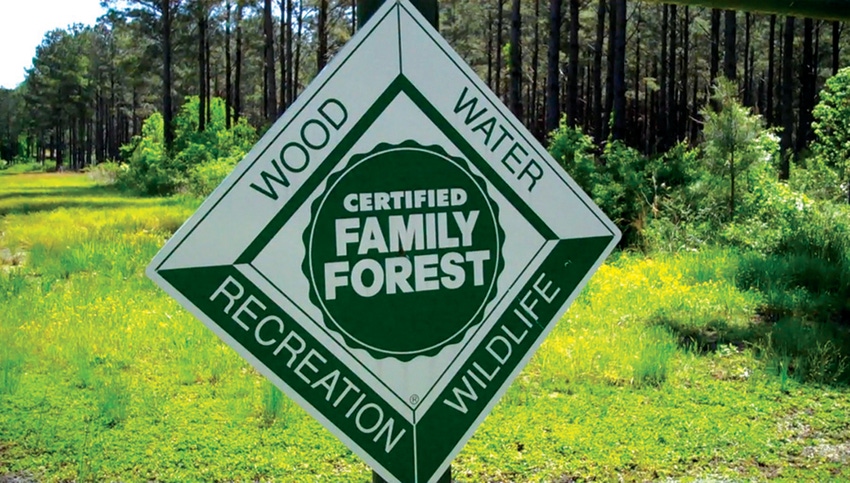
“Everyone is asking, what’s it going to take to see an increase in demand for our southern pine and hardwood timber,” says James Henderson, Mississippi State University assistant Extension professor for forest economics and management, who spoke at the Mississippi Farm Bureau Federation’s Winter Commodity Conference at Jackson. “We want to see increased residential construction, we want to see the supply of existing homes on the market come down, and we want to see the unemployment rate drop — economic growth means more jobs and more people buying houses.”

U.S. timber and lumber sales have taken a major hit as a result of the housing bubble collapse and the economic recession that began in 2008, says James Henderson, and while there has been a glimmer of improvement in the market — thanks in part to China — it may be 2015/2016 before housing starts boost demand to pre-recession levels.
“Everyone is asking, what’s it going to take to see an increase in demand for our southern pine and hardwood timber,” the Mississippi State University assistant Extension professor for forest economics and management said at the Mississippi Farm Bureau Federation’s Winter Commodity Conference at Jackson.
“We want to see increased residential construction, we want to see the supply of existing homes on the market come down, and we want to see the unemployment rate drop — economic growth means more jobs and more people buying houses.”
The timber market is highly correlated with housing construction in the U.S., Henderson notes. “Since 1959, when the Census Bureau started tracking housing numbers, we’ve seen a lot of ups and downs, usually coinciding with recessions.
“From 1959 until the recession that began in 2008, housing construction in the U.S. never dropped below 800,000 units per year. But for the past few years, we’ve only had about 600,000 housing starts.”
That downward trend brought with it a decline in southern lumber production, Henderson says.
“The good news is that the housing market has started to pick up just a little bit and we’re seeing a slight improvement in the timber market.”
Looking back seven years or so, he says, the state average for pine saw timber was $49, and at the end of the fourth quarter 2011 it was $26.45 — “an incredible decline of nearly 50 percent.
“Interestingly, high grade and mixed hardwood timber have held their value during this market decline much better than pine.”
Real estate analysts say about a six month supply of existing and newly-constructed homes is a healthy market, Henderson says. “Just before the recession, home prices had become exaggerated — people were paying incredible prices and inventory had become very low. Then came the housing bubble and housing numbers peaked at around 12 months of supply. The government’s first time buyer housing credit helped bring down inventories somewhat, but a series of long-term employment-related foreclosures brought the number back up.
“Now, the housing inventory is getting back near a six month supply. While there is still a shadow of foreclosures hanging over the market, that situation is looking better and that’s why we’ve seen home construction moving up a bit.”
But to bring more existing and constructed homes out of the market, Henderson says, “We need to bring down the unemployment rate. That has dropped from more than 10 percent to around 8.5 percent, which is good. But it needs to be better.
“Since September 2010, housing starts and permits, a leading indicator of home construction, have been trending up. That’s positive.
“The leading index for the U.S. gross domestic product is positive, at about 1.6 — not fantastic, but good. All this is positive for the long-term outlook for the U.S. timber economy.”
The National Association of Home Builders is forecasting that the slump over the past three years is going to start clearing up by 2013, he says.
“A healthy level of housing starts, they say, should be about 1.5 million housing starts — and that’s when we should start to see real improvement in the timber market. The question is, how long is it going to take to get to that 1.5 million number? Extending the trend line of housing starts, it looks like it will be 2015 and into 2016 to reach that level.”
China No. 1 buyer
Something that has been helping prices nationally is “the incredible amount” of timber and lumber that China has been purchasing from the U.S., Henderson says. “They are now our No. 1 export market. Hopefully, that trend will continue as their economy keeps developing and they’ll purchase even more of our timber and lumber.”
Longer term, he says, the expansion of the Panama Canal “will allow movement of some really large cargo ships into southern U.S. ports, and hopefully we’ll send them back with some lumber.”
Another silver lining of sorts, Henderson says, is that “real estate analysts and economists are very optimistic about what they see in the statistics for population growth and household formation.
“During a recession, people delay starting new households, waiting for conditions to improve. While the U.S. housing affordability index is the highest it has been since 1980, getting home loans isn’t terribly easy right now — some banks require a 20 percent down payment.
“But as the unemployment numbers improve and credit markets start to thaw a bit more, we can expect the formation of new households to begin to spike upward, and that will be good for timber.
“An overriding question is, how frail is the U.S. economy right now?”
The Conference Board of Consumer Confidence notes that building permits are up and the long decline in housing is slowing, Henderson says. “But they have a caveat: they’re concerned about the ongoing recession in Europe, which could derail the economic recovery and open the door to a global financial crisis.
“So, you need to take all this into considering in forming your strategy for holding or marketing timber.
“There’s a lot of timber out there growing on the stump, and the harvest rate has been down for some time, which is adding to the supply. Take this into consideration when you’re making your future harvest decisions.”
Timber tax seminars
Tax laws for timber producers can be quite complicated, and Henderson notes that three workshops focusing on tax issues are upcoming.
“Landowners, certified public accountants, consulting foresters and loggers are invited to participate in the Income Taxes and Family Forest short course conducted by the Mississippi State University Extension Service.”
The workshops will be held Feb. 28 at Raymond, Miss.; March 1 at Coffeeville, Miss.; and March 29 at Oxford, Miss.
Topics will include changes to capital gains tax law, basics of basis, record keeping, timber sales income, recovery of reforestation costs, casualty losses, strategic tax planning, tax forms and information sources.
Registration is $35 for individuals and $50 for couples, and includes handouts, notebooks with reference materials, lunch and refreshments. The classes begin at 8:30 a.m. and conclude at 4 p.m. Professional loggers and foresters may earn continuing education credits.
Registration deadlines are Feb. 20 for Raymond and Coffeeville, and March 26 for Oxford. For more information, contact the Hinds County Extension office at (601) 372-1424, the Yalobusha County Extension office at (662) 675-2730, or the Lafayette County Extension office at (662) 234-4451.
And Henderson says, producers should “get assistance from a qualified CPA or attorney who is knowledgeable of the intricacies of timber tax issues.
“There are also a number of IRS publications that can be helpful, and a really good website for those owning or managing timberland is timbertax.org. Several timber tax publications are also available at msu.cares.com.”
About the Author(s)
You May Also Like



